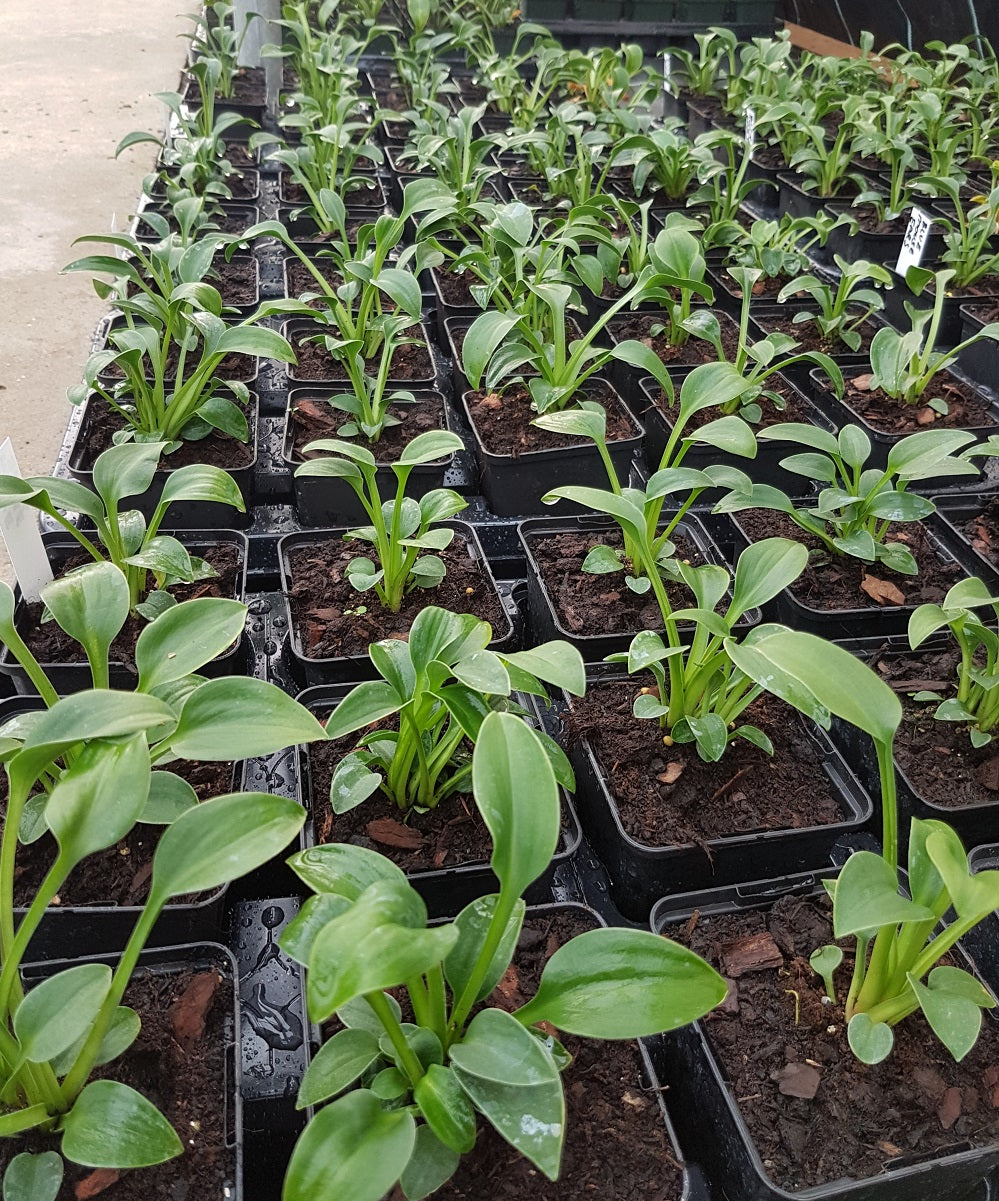
Growing hostas from seed is possible but here is what you should be aware of. Firstly and most importantly hostas will not come true from seed. What we mean by that is if you collected seeds from Hosta 'June' and geminated them, the plants you grew would not be Hosta 'June'. Most hosta seedlings are rather plain and are almost always solid green similar to all green reversions. It is important to be aware of this in advance so you don't spend a long time trying to grow from seed and then finding you are left we plants that you didn't think you were going to get.
How to grow from seed
We don't grow from seed at the nursery for two reasons, one as explained above is that the plants do not come true and would therefore be difficult to sell and the second reason being it is very time consuming and loss can be high if they are not cared for properly.
If you did want to grow hosta seeds the paper towel method is usually the most reliable way to get your seedlings to germinate.
Get the kids involved
Although growing hostas from seed may not be a viable way of producing true to type varieties it is certainly rather interesting and can be really enjoyable. Getting the kids or grandchildren involved can be really fun for them and they will end up with plants that can be planted out in the garden and will come back every year. As hosta seedlings are not named varieties you could also make it fun for them by getting them to name their seedlings!
Cross pollination (Hybridising)
If you are an avid hosta grower and fancy a bit of a challenge, you could try producing a hybrid variety through cross pollination. This is a time consuming game and you have to bear that in mind before start. The other thing is that you are really not guaranteed anything from it in the end, there is a high likelihood that you may end up with all green plants after all.
To cross pollinate you will need a paintbrush and small tags. With your paint brush gather the pollen from the stamens of one plant and then brush it onto the stigma of the other. The plant that has been pollinated will be the one that produces the seed pods that will be harvested. Make a note of what varieties have been mixed on a small tag and attach it to the flower pollinated so you know when you come back to harvest the seeds.
Trying multiple combinations can be a good way of producing something interesting. Crossing two varieties that have attributes that you like can help produce some that may have a good mixture of colour, shape and size.
Some famous hybrisers such as Bob Solberg in the USA have produced some of the finest varieties in resent years such as 'Curly Fries' and 'First Blush'.